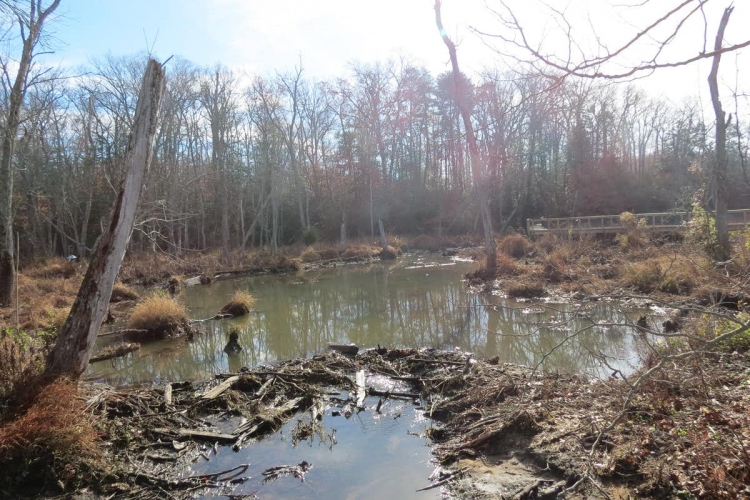
A beaver dam in Mason Neck State Park in Lorton, Virginia, creates a pond behind it that can spread out and slow down floodwaters during a storm. Virginia State Parks, CC BY
Beavers offer lessons about managing water in a changing climate, whether the challenge is drought or floods
Jan 20, 2022 at 11:20am
It’s no accident that both the Massachusetts Institute of Technology and the California Institute of Technology claim the beaver (Castor canadensis) as their mascots. Renowned engineers, beavers seem able to dam any stream, building structures with logs and mud that can flood large areas.
As climate change causes extreme storms in some areas and intense drought in others, scientists are finding that beavers’ small-scale natural interventions are valuable. In dry areas, beaver ponds restore moisture to the soil; in wet zones, their dams and ponds can help to slow floodwaters. These ecological services are so useful that land managers are translocating beavers in the U.S. and the United Kingdom to help restore ecosystems and make them more resilient to climate change.
Scientists estimate that hundreds of millions of beavers once dammed waterways across the Northern Hemisphere. They were hunted nearly to extinction for their fur in the 18th and 19th centuries in Europe and North America but are making comebacks today in many areas. As a geoscientist specializing in water resources, I think it’s important to understand how helpful beavers can be in the right places and to find ways for humans to coexist with them in developed areas.
How beavers alter landscapes
Beavers dam streams to create ponds, where they can construct their dome-shaped lodges in the water, keeping predators at a distance. When they create a pond, many other effects follow.
Newly flooded trees die but remain standing as bare “snags” where birds nest. The diverted streams create complicated interwoven channels of slow-moving water, tangled with logs and plants that provide hiding places for fish. The messy complexity behind a beaver dam creates many different kinds of habitats for creatures such as fish, birds, frogs and insects.
Human dams often block fish passage upstream and downstream, even when the dams include fish ladders. But studies have shown that fish have no trouble migrating upstream past beaver dams. One reason may be that the fish can rest in slow pools and cool pond complexes after navigating the tallest parts of the dams.
The slow-moving water behind beaver dams is very effective at trapping sediment, which drops to the bottom of the pond. Studies measuring total organic carbon in active and abandoned beaver meadows suggest that before the 1800s, active and abandoned beaver ponds across North America stored large amounts of carbon in sediment trapped behind them. This finding is relevant today as scientists look for ways to increase carbon storage in forests and other natural ecosystems.
Continue reading the article from The Conversation here.
